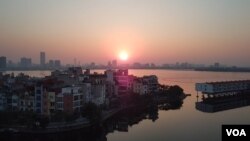Look around the cities of Vietnam and it is not hard to find luxury apartments valued at millions of dollars, while down the same streets, there are crumbling huts with faded metal sheets for roofs. The low end and the high end of the country’s real estate sector are well established, in other words, but what about everyone else in between the two extremes?
Affordable Housing getting harder to find
The emerging middle class and working class in fast-growing Vietnam are creating ever more demand for new housing. If this market demand is not met, the country could experience the kinds of affordability crises seen in countries from Brazil to Ireland.
The numbers suggest that affordability is not the top priority. Recent data from the Vietnam unit of Jones Lang LaSalle Incorporated, a commercial real estate services firm, show that there are more apartments in the luxury, premium, and mid end segments that have come on to the Ho Chi Minh City market this year, but not as many apartments in the affordable segment.
Efforts to attack the problem
But some real estate developers are starting to pay attention to this demand. Phu My Hung Development Corporation, which focuses on middle class buyers, is raising 1.7 trillion Vietnam dong, worth about U.S. $75 million, through a bond issue to develop a township in a rural area about 60 kilometers away from Hanoi.
“With this investment, we are now well-positioned to focus on developing new, integrated townships in a number of secondary provinces, starting with Phu Hung Khang township, as part of a sustainable growth model,” said Gary Tseng, the chief executive of the Phu My Hung Development Corporation.
The real estate developer takes its name from an area of southern Ho Chi Minh City known for organized urban planning. Tseng referred to the Phu My Hung area as a model of “a sustainable city with efficient water, power, and transit solutions” that “can and should be replicated.”
Townships like this are being constructed almost from scratch. Unlike in places such as the United States, where decades-old houses are regularly bought and sold on a large scale, the real estate market in Vietnam often involves people buying up land, and then constructing their own houses on that land.
Government help
The government is not unaware of the need for affordable housing. In recent years it has allocated a package for what it calls dự án nhà ở xã hội, or social housing projects, valued at a total of 30 trillion Vietnam dong, or about U.S. $1.3 billion, but that package has not been enough to meet the demand for affordable housing.
Vietnam’s growth is bringing urban sprawl, especially in the two biggest cities -- the political capital of Hanoi in the north and the business hub of Ho Chi Minh City in the south -- that could price out residents. The International Finance Corporation sees townships like those built by Phu My Hung as a way to spread out the population growth in other parts of the country, rather than just in the popular cities. IFC, a part of the World Bank Group that focuses on issuing loans for countries’ development, subscribed to the Phu My Hung bond issue.
“This investment will deliver quality and climate-friendly accommodation to people working in and around Hanoi, thus easing the pressure on the fast-growing capital, and provide jobs and income for local communities,” said Kyle Kelhofer, the IFC country manager for Vietnam, Cambodia, and Laos.
He referred to the real estate project as a way to focus on “a secondary province” while promoting “rural development and inclusive growth” in Vietnam.







